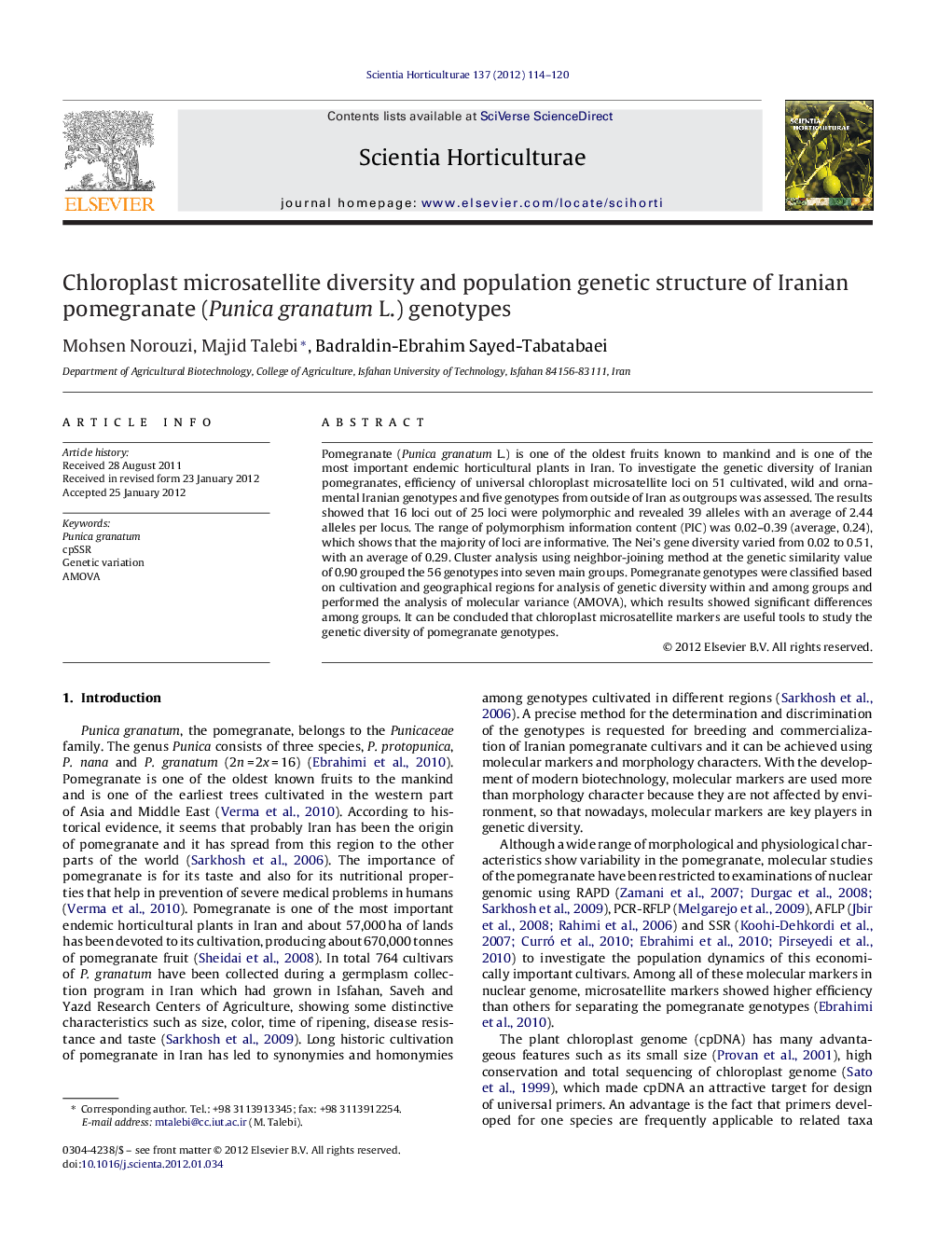| کد مقاله | کد نشریه | سال انتشار | مقاله انگلیسی | نسخه تمام متن |
|---|---|---|---|---|
| 4567805 | 1628861 | 2012 | 7 صفحه PDF | دانلود رایگان |

Pomegranate (Punica granatum L.) is one of the oldest fruits known to mankind and is one of the most important endemic horticultural plants in Iran. To investigate the genetic diversity of Iranian pomegranates, efficiency of universal chloroplast microsatellite loci on 51 cultivated, wild and ornamental Iranian genotypes and five genotypes from outside of Iran as outgroups was assessed. The results showed that 16 loci out of 25 loci were polymorphic and revealed 39 alleles with an average of 2.44 alleles per locus. The range of polymorphism information content (PIC) was 0.02–0.39 (average, 0.24), which shows that the majority of loci are informative. The Nei's gene diversity varied from 0.02 to 0.51, with an average of 0.29. Cluster analysis using neighbor-joining method at the genetic similarity value of 0.90 grouped the 56 genotypes into seven main groups. Pomegranate genotypes were classified based on cultivation and geographical regions for analysis of genetic diversity within and among groups and performed the analysis of molecular variance (AMOVA), which results showed significant differences among groups. It can be concluded that chloroplast microsatellite markers are useful tools to study the genetic diversity of pomegranate genotypes.
► Efficiency of universal chloroplast microsatellite loci on 52 Iranian pomegranate genotypes was assessed.
► The PIC value showed that the majority of loci are informative.
► The UPGMA clustering analysis grouped the genotypes into six main groups mainly based on cultivation types.
► AMOVA results showed significant differences among groups of genotypes according to cultivation types and geographical regions.
Journal: Scientia Horticulturae - Volume 137, 1 April 2012, Pages 114–120